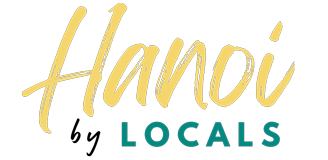The Vietnam Ethnic Culture Village is an attractive destination near Hanoi, where visitors can explore the cultural diversity of the 54 ethnic groups. Here, you will experience unique customs and traditions, enjoy a rich variety of cuisine, and participate in many exciting cultural activities. It’s a wonderful opportunity to better understand Vietnam’s cultural identity and interact with people from different ethnic backgrounds.
Where is the Vietnam Ethnic Culture Village?
Located 45 km from downtown Hanoi, the Vietnam Ethnic Culture Village is part of the Dong Mo – Ngai Son tourism area in Son Tay Town, Hanoi. This village is one of the most attractive destinations for those who love to explore and learn about the diverse cultures of the 54 ethnic groups in Vietnam. Covering an area of 1,544 hectares, it is considered a “common home” for the various ethnic groups in Vietnam, where unique and rich cultural traits from all over the country converge.
The location on Google Map: https://maps.app.goo.gl/7SVWserdhkyxrqMK9
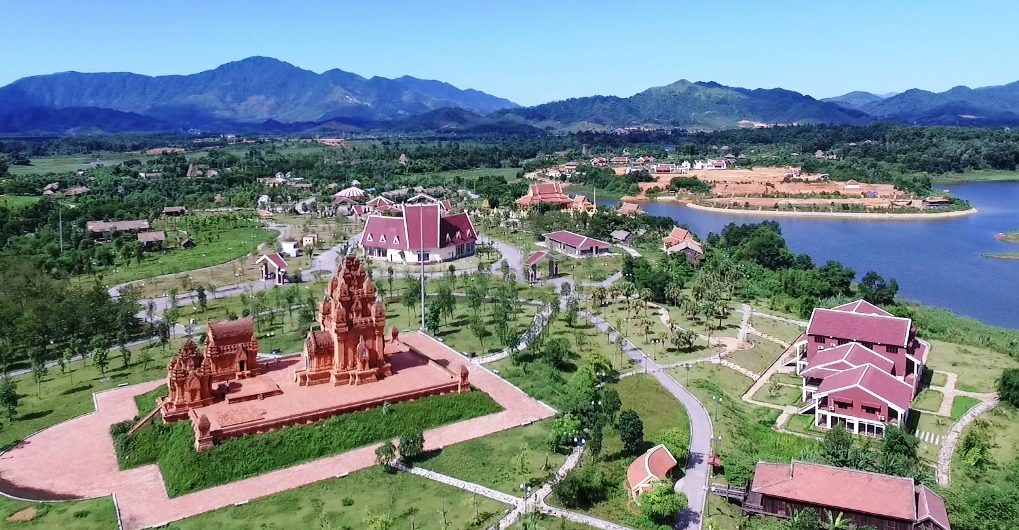
How to Get to the Culture Village?
Visitors can easily reach the Ethnic Culture Village by car or motorbike. If you are driving, follow Thang Long Boulevard, and after passing the Mai Temple for about 100 meters, you will see signs directing you to the village. For those traveling by motorbike, you can go straight along Road 32, through Son Tay Town, and continue onto Da Bac Road. The convenient transportation system makes it easy and quick to travel, making the Ethnic Culture Village an ideal destination for both locals and international tourists.
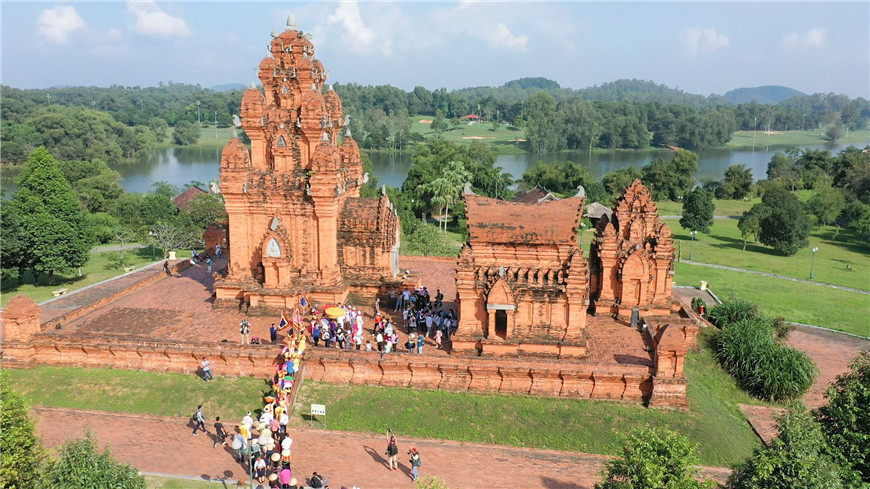
Exploring the Ethnic Groups of Vietnam
Overview of the Culture Village
The Vietnam Ethnic Culture Village was established with the goal of recreating the distinctive cultural values of the 54 ethnic groups in Vietnam. Upon arrival, visitors will have the opportunity to tour ethnic villages designed in traditional architectural styles, showcasing the cultural identities of different regions. Each village cluster offers unique experiences, from clothing and cuisine to the customs and practices of the various ethnic groups.
The village is also home to residents, with each house representing a different family and ethnic group living together. The locals not only engage in tourism but also reside in these homes. Therefore, when visiting, you will meet direct representatives of various Vietnamese ethnic groups, listen to their fascinating stories, and explore their unique customs and traditions.

What makes this place attractive?
The Culture Village is divided into 7 main functional areas, including:
- Ethnic Village Area: This area replicates the traditional village structures of the various ethnic groups in Vietnam. Here, visitors can explore stilt houses, communal houses, and other distinctive architectural works of each ethnic group.
- Cultural Center: This is where vibrant cultural activities take place, such as dances, songs, and traditional ceremonies. Visitors can participate in performances and learn more about the customs of each ethnic group. Throughout the year, the village hosts special events that vividly showcase the cultural identity of the Vietnamese people.
- Recreational Area: This area provides entertainment activities for visitors, including folk games and traditional sports.
- World Cultural Heritage Area: This area displays the unique cultural values recognized by UNESCO, helping visitors gain a deeper understanding of Vietnam’s cultural heritage.
- Park and Wharf Area: A relaxing space by the lake where visitors can participate in activities such as boating, fishing, and enjoying the natural scenery.
- Green Space and Water Area: A place where visitors can immerse themselves in nature, stroll through lush greenery, and relax by Dong Mo Lake.
- Comprehensive Tourism Services Area: This area provides various services for visitors, including restaurants, cafes, and souvenir shops.
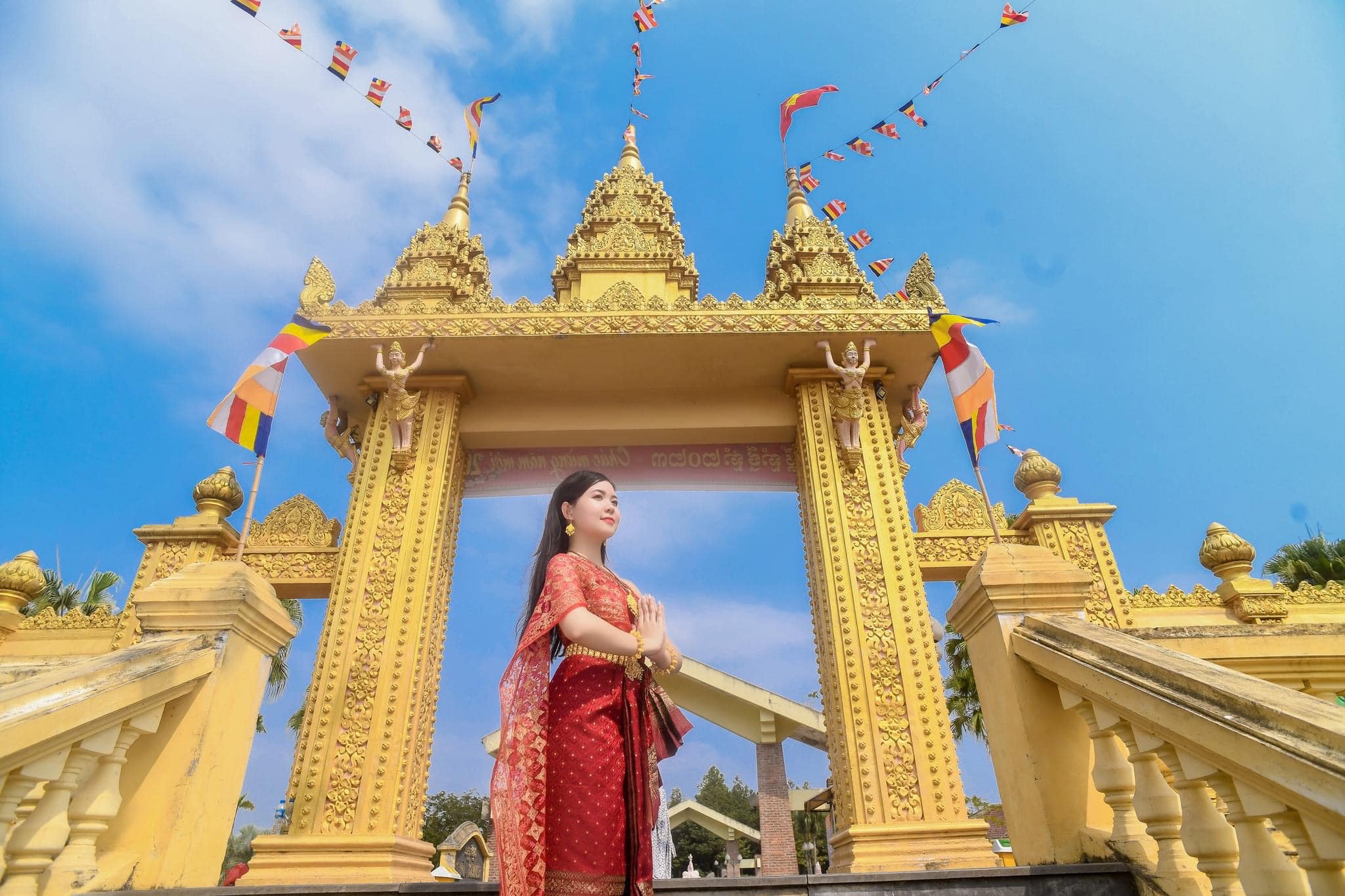
Unique Activities You Must Try
When visiting the Culture Village, guests can not only admire the scenery but also participate in many unique cultural activities. You can try your hand at folk games like tug-of-war and bamboo dancing, or join cooking classes to learn how to prepare traditional dishes from different ethnic groups. Additionally, frequent cultural performances will provide you with enriching and deep experiences regarding the cultures of these ethnic groups.
Exploring the distinctive homes of the 54 ethnic groups and capturing beautiful photos against the backdrop of their impressive architecture is an experience not to be missed. The cuisine of the 54 ethnic groups is also one of the most exciting experiences here. You can purchase various cakes and specialties from each ethnic group or pre-arrange local dining experiences through the tourism area.
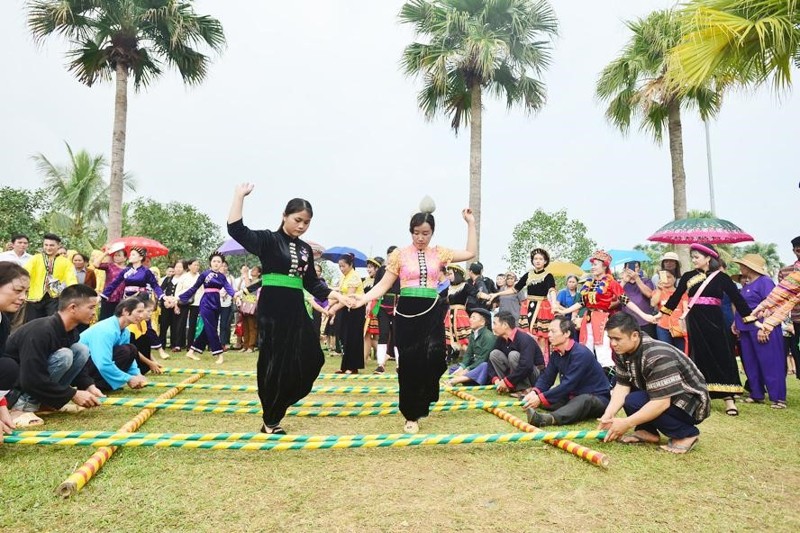
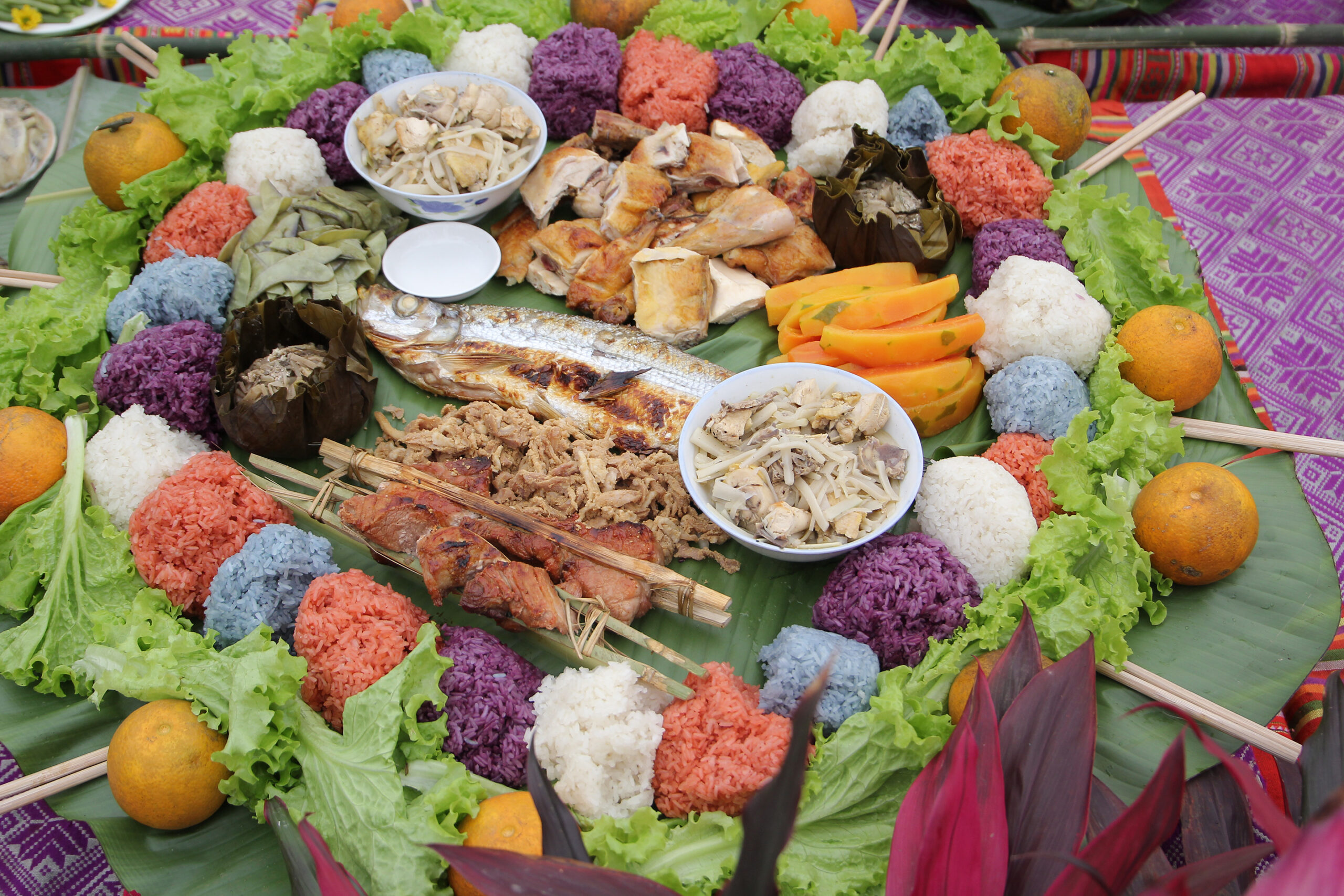
Experience the Architectural Space of Ethnic Houses
Traditional Stilt Houses
At the Vietnam Ethnic Culture Village, visitors will have the opportunity to experience traditional stilt houses, live with ethnic communities, and enjoy traditional dishes made from natural ingredients and local produce. This will undoubtedly be an exciting experience, allowing visitors to appreciate the beauty, customs, and lifestyles of the ethnic groups here.
The stilt houses feature simple architecture, with spacious, quiet, and rustic interiors that create a peaceful atmosphere, harmonizing with nature and cultural values. These houses are constructed entirely from natural materials such as wood, bamboo, rattan, and thatched roofs made from palm leaves or straw. Entering a stilt house, you will feel the warmth in winter and the coolness in summer. Depending on the traditional architectural style of each ethnic group, the capacity of each stilt house varies.
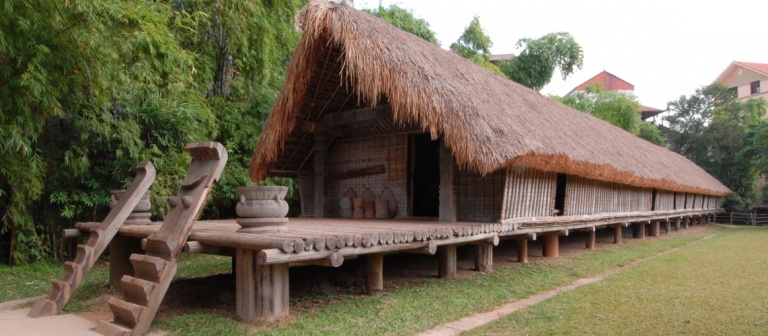
At the Vietnam Ethnic Culture Village, you can experience notable stilt houses that meet the accommodation needs of visitors, such as:
- Cham Ethnic Stilt House: Located in the Village III area, this stilt house is designed to accommodate three generations: grandparents, parents, and children. It consists of two main houses connected by a shared space used for storage. Each house has its own porch, with a wooden structure roofed with fish-scale tiles. The porches have railings made of wooden slats. The two houses are built with wooden columns and beams. A noticeable feature of the Cham house in An Giang is the outer wooden walls connected to the column system, and the main house has a central column that supports the roof structure. The main house has three compartments, with the largest used as a reception area and a private room for sleeping. It has two main doors leading to the porch, three side doors to rooms, and one door leading to the kitchen, along with two large windows and eight smaller windows, all equipped with iron grilles.
- Muong Ethnic Stilt House: Located in the Village I area, the Muong people’s houses are typically built on hillsides, backed by mountains, with four roofs and three compartments, featuring wooden floors. The first compartment, accessed by stairs, is called the “root compartment,” where rituals expressing the relationship between humans and the house take place. Here, you will find a larger central column for the ancestor altar. The middle compartment is usually where rice is stored and cooking takes place, while the last compartment is separated from the others by a bamboo screen, serving as a storage area for dishes and household items, as well as a place for cooking and resting for women. The Muong stilt house not only represents a material value but also embodies the human values, beliefs, and long-standing customs of many generations of the Muong people.
- Ede Long House: Situated in the Village III area, the long house of the Ede ethnic group is considered a unique cultural creation closely tied to the daily life and beliefs of the Ede people in their mountainous homeland. The long house is divided into two distinct parts: Gah and Ôk. Gah is the front half of the house, serving as the reception area, family meetings, ceremonies, or gong performances. Ôk is where the kitchen is, serving as the cooking area and living space for couples. The design of the windows on the side of the house also holds particular significance, showcasing the uniqueness of the Ede architectural space.
In addition, there are other representative stilt houses from ethnic groups such as the Thai, Tay, and Nung, all equipped to welcome guests.
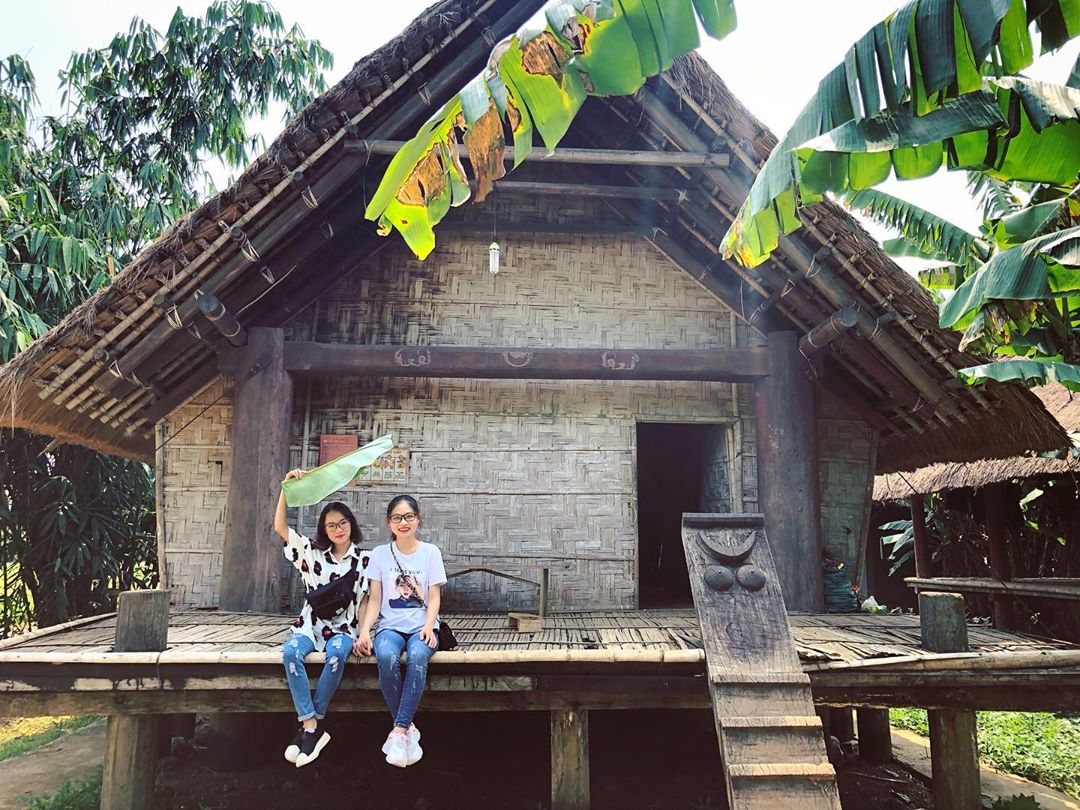
Special Experience of Staying in Stilt Houses
Staying in the traditional stilt houses of various ethnic groups at the Culture Village allows visitors to enjoy a cool atmosphere, connect with nature, and engage in conversations with local ethnic communities to fully appreciate the traditional cultural beauty of the area. You will drift off to sleep without being disturbed by traffic noise, instead hearing the soothing sounds of crickets and frogs. Simple, friendly, and attentive — this is what the Culture Village aims to provide for its guests.

Ticket Prices and Opening Hours
The entrance fee to the Culture Village is very reasonable, with prices as follows:
- Adults: 30,000 VND/person
- Students: 10,000 VND/person
- Children and students: 5,000 VND/child
Additionally, if you wish to explore further, you can rent an electric vehicle for 40,000 VND for adults and 25,000 VND for students. The village is open from 8:00 AM to 5:00 PM daily, with ticket sales from 8:00 AM to 4:30 PM. This schedule is very convenient for visitors to have enough time to explore, experience, and learn about the culture and customs of the various ethnic groups throughout the country.
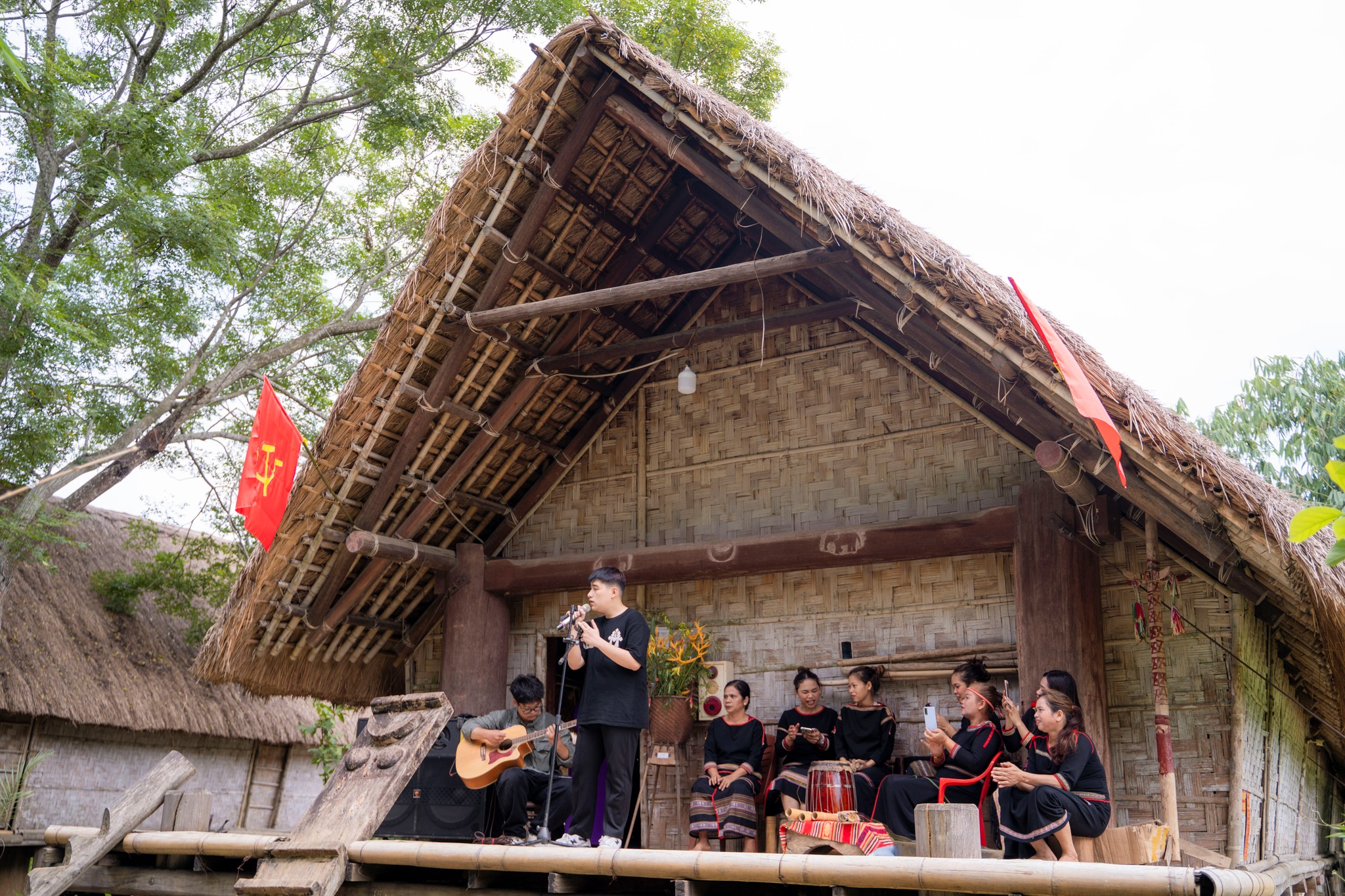
Important Notes When Visiting the Culture Village
When visiting the Culture Village, keep in mind the following tips to enhance your experience:
- Learn about the culture: Understanding the history and customs of the ethnic groups will provide you with deeper insights. You can refer to materials or ask staff at the village for more information.
- Wear comfortable clothing: Dress appropriately for the weather and wear comfortable shoes, as you will be moving around a lot to explore different areas.
- Prepare personal items: Sunscreen, drinking water, and snacks are essential, especially on hot days.
- Respect the culture: Always ask for permission before taking photos of people or ceremonies to show respect. This not only helps you capture beautiful moments but also fosters closeness with the local people.
- Learn a few greetings: If possible, learn a few greetings or thank you phrases in the languages of the ethnic groups to create a friendly and engaging atmosphere with the locals.
The Vietnam Ethnic Culture Village is a place that helps visitors gain a better understanding of the culture and people of Vietnam. Here, you will have the chance to experience the unique cultural values of the 54 ethnic groups, from architecture and cuisine to customs and practices. This is truly an exciting journey to explore and experience the wonderful aspects of Vietnamese culture. Come and feel the richness and diversity of Vietnamese culture here!
